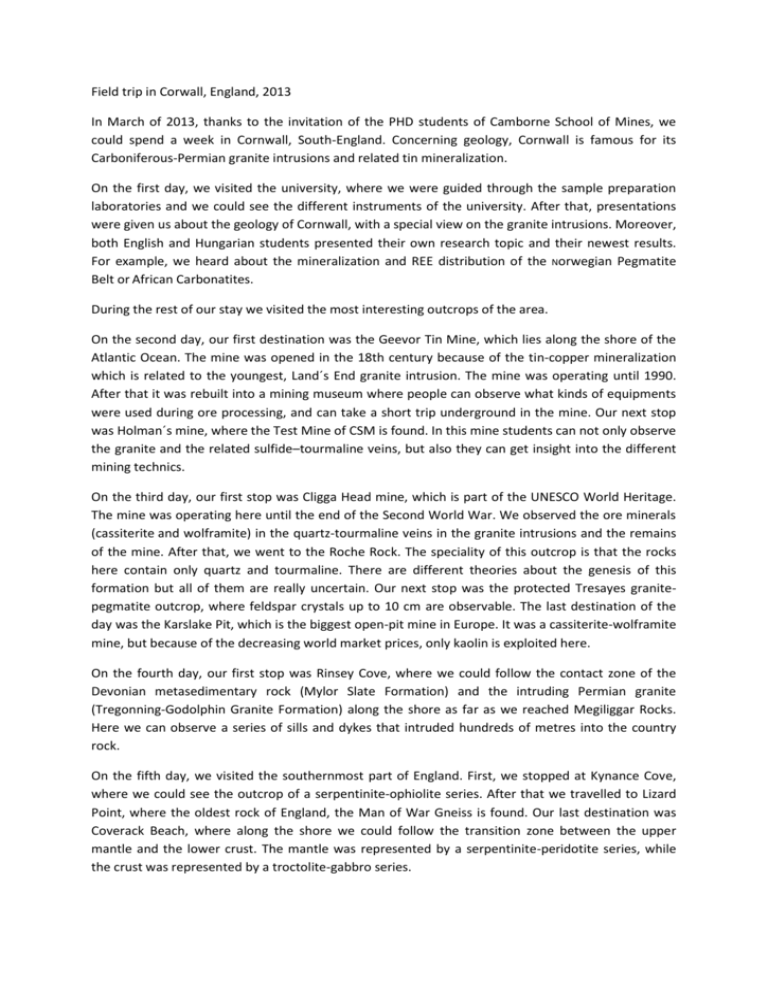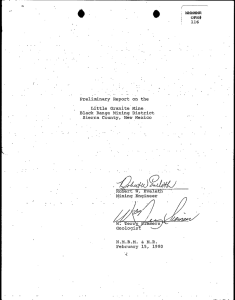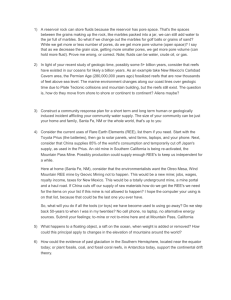Field trip in Corwall, England, 2013 In March of 2013, thanks to the
advertisement

Field trip in Corwall, England, 2013 In March of 2013, thanks to the invitation of the PHD students of Camborne School of Mines, we could spend a week in Cornwall, South-England. Concerning geology, Cornwall is famous for its Carboniferous-Permian granite intrusions and related tin mineralization. On the first day, we visited the university, where we were guided through the sample preparation laboratories and we could see the different instruments of the university. After that, presentations were given us about the geology of Cornwall, with a special view on the granite intrusions. Moreover, both English and Hungarian students presented their own research topic and their newest results. For example, we heard about the mineralization and REE distribution of the Norwegian Pegmatite Belt or African Carbonatites. During the rest of our stay we visited the most interesting outcrops of the area. On the second day, our first destination was the Geevor Tin Mine, which lies along the shore of the Atlantic Ocean. The mine was opened in the 18th century because of the tin-copper mineralization which is related to the youngest, Land´s End granite intrusion. The mine was operating until 1990. After that it was rebuilt into a mining museum where people can observe what kinds of equipments were used during ore processing, and can take a short trip underground in the mine. Our next stop was Holman´s mine, where the Test Mine of CSM is found. In this mine students can not only observe the granite and the related sulfide–tourmaline veins, but also they can get insight into the different mining technics. On the third day, our first stop was Cligga Head mine, which is part of the UNESCO World Heritage. The mine was operating here until the end of the Second World War. We observed the ore minerals (cassiterite and wolframite) in the quartz-tourmaline veins in the granite intrusions and the remains of the mine. After that, we went to the Roche Rock. The speciality of this outcrop is that the rocks here contain only quartz and tourmaline. There are different theories about the genesis of this formation but all of them are really uncertain. Our next stop was the protected Tresayes granitepegmatite outcrop, where feldspar crystals up to 10 cm are observable. The last destination of the day was the Karslake Pit, which is the biggest open-pit mine in Europe. It was a cassiterite-wolframite mine, but because of the decreasing world market prices, only kaolin is exploited here. On the fourth day, our first stop was Rinsey Cove, where we could follow the contact zone of the Devonian metasedimentary rock (Mylor Slate Formation) and the intruding Permian granite (Tregonning-Godolphin Granite Formation) along the shore as far as we reached Megiliggar Rocks. Here we can observe a series of sills and dykes that intruded hundreds of metres into the country rock. On the fifth day, we visited the southernmost part of England. First, we stopped at Kynance Cove, where we could see the outcrop of a serpentinite-ophiolite series. After that we travelled to Lizard Point, where the oldest rock of England, the Man of War Gneiss is found. Our last destination was Coverack Beach, where along the shore we could follow the transition zone between the upper mantle and the lower crust. The mantle was represented by a serpentinite-peridotite series, while the crust was represented by a troctolite-gabbro series. Karslake Pit The University Risney Cove Risney Cove Meggiligar Rocks Meggiligar Rocks Meggiligar Rocks










